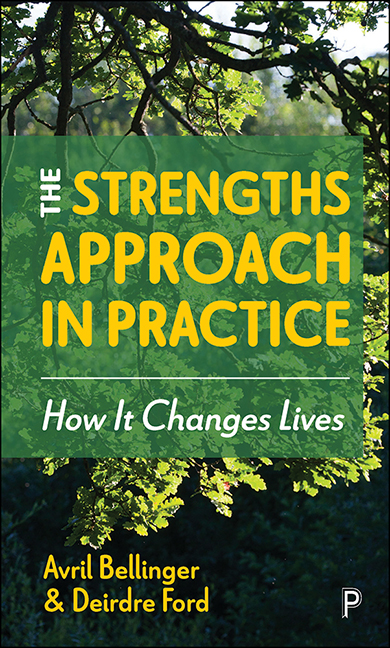Book contents
- Frontmatter
- Dedication
- Contents
- List of figures, tables and boxes
- About the authors
- Acknowledgements
- Preface
- Introduction: The strengths approach in a global emergency
- 1 A strengths approach to human need
- 2 A strengths approach to law and policy
- 3 A strengths approach to organisational development
- 4 A strengths approach to governance and management
- 5 A strengths approach to funding an NGO
- 6 A strengths approach to research
- 7 A strengths approach to student learning
- 8 A strengths approach to growing community
- 9 The strengths approach in practice: how it changes lives
- References
- Index
9 - The strengths approach in practice: how it changes lives
Published online by Cambridge University Press: 15 September 2022
- Frontmatter
- Dedication
- Contents
- List of figures, tables and boxes
- About the authors
- Acknowledgements
- Preface
- Introduction: The strengths approach in a global emergency
- 1 A strengths approach to human need
- 2 A strengths approach to law and policy
- 3 A strengths approach to organisational development
- 4 A strengths approach to governance and management
- 5 A strengths approach to funding an NGO
- 6 A strengths approach to research
- 7 A strengths approach to student learning
- 8 A strengths approach to growing community
- 9 The strengths approach in practice: how it changes lives
- References
- Index
Summary
‘It is obvious that we cannot play, learn or achieve when we are hungry, weak and homeless.’
EricThe strengths approach, explored and illustrated throughout these chapters, is one that looks to the future. It is concerned with lives being made rather than looking back on the past, when people became labelled as refugees. The immigration process requires people to tell an unchanging story of their persecution in order to be believed and granted leave to remain. In a media-drenched environment where every detail of people's lives and experiences are shared, it can seem acceptable to ask for the stories of danger and escape. Through media bombardment we are desensitised to the intrusion of satisfying our curiosity. Local volunteers who are new to START have a tendency to ask ‘How did you get here?’ oblivious to the fact that asking someone to revisit the trauma in this way can be deeply disturbing.
For some people, the opportunity to tell their whole story in their own way can be cathartic and part of the process of building their future. A particularly powerful example is the play How Not To Drown, written and performed by Dritan Kastrati who came to England as an unaccompanied, asylum-seeking child aged 11 (Billington, 2019). Similarly, Dina Nayeri's novel (2017) and journalism (2019b) invite the reader to glimpse the complex and nuanced experience of being a refugee. As she writes: ‘The refugee story doesn't end at asylum and safety, the moment when many readers look away. It is an endless battle with pride, shame, identity and especially language’ (Nayeri, 2019b).
For the majority of people, however, their energy is directed at building their futures rather than examining their past.
Inevitably, not everyone who comes to the organisation is satisfied with the outcome although monitoring consistently gives us confidence in the service. In this chapter we present the positive experiences of five refugees in their own words, using a process described in Box 9.1. The accounts start at the point of their first encounter with START and describe their journeys to the future. In so doing, we hope to show the instability of categories that lock people into stereotypes.
- Type
- Chapter
- Information
- The Strengths Approach in PracticeHow It Changes Lives, pp. 190 - 205Publisher: Bristol University PressPrint publication year: 2022



